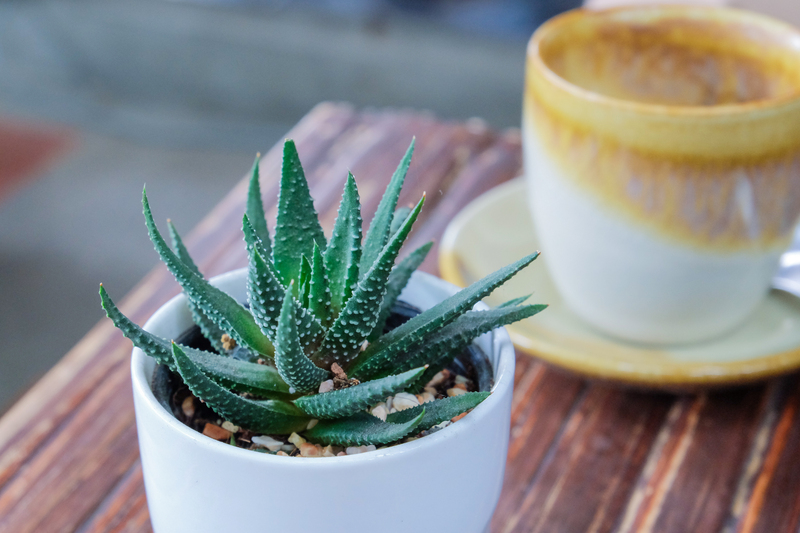Transform Your Lawn Care Routine to Avoid Summer Drought Stress
Summer can be a challenging period for lawns as the combination of intense sunlight and lack of rainfall leads to rapid moisture loss. Many homeowners experience brown patches, thinning grass, and even irreversible damage. But with the right lawn care routine, you can dramatically reduce the impacts of summer drought stress. This comprehensive guide will help you discover how to transform your approach and maintain a lush, green lawn throughout the hottest months.
Understanding Summer Drought Stress
Before addressing solutions, it's important to understand what drought stress is and how it affects your yard. Drought stress in lawns occurs when water loss from evaporation and transpiration exceeds the moisture available in the soil.
- Wilting and Discoloration: Drought-stressed grass often turns a dull blue-green shade and starts to wilt.
- Browning Out: Severe drought leads to grass becoming brown and brittle; this is usually a protective measure, not death.
- Reduced Growth and Thinning: Lawns under water stress stop growing and thin out, making them vulnerable to weeds, pests, and disease.
Summer drought stress can jeopardize months of hard work, but you can counteract it and keep your lawn healthy, resilient, and aesthetically pleasing.

Key Strategies for Preventing Lawn Drought Stress
1. Choose the Right Drought-Resistant Grass Species
Not all grasses handle drought equally. If you struggle every summer, consider overseeding with drought-tolerant grass varieties. These can withstand long periods without water and recover faster.
- Bermuda Grass: Famous for its heat and drought resilience.
- Zoysia Grass: Excellent drought tolerance and dense growth.
- Buffalo Grass: Native to North America, requires far less water than other turfgrasses.
- Tall Fescue: Deep roots make it more resistant to dryness than typical cool-season grasses.
Pro tip: Contact your local extension office for recommendations on the best drought-resistant grasses for your region.
2. Enhance Your Soil's Water Holding Capacity
Healthy, well-structured soil makes all the difference in evolving your lawn care routine to avoid summer drought stress. Sandy soils drain too quickly; clay soils may compact and resist water absorption. Either case spells trouble during drought.
Here are effective ways to transform your soil:
- Core Aeration: Aerate your lawn at least once a year. This practice loosens soil, improves oxygen flow, and helps water reach grass roots more efficiently.
- Compost and Organic Amendments: Top-dress your lawn with compost to boost humus content and improve moisture retention.
- Mulch Grass Clippings: Leave clippings after mowing; they return moisture and nutrients to the soil.
Amending the soil and improving structure is one of the best defenses against summer drought on your lawn.
3. Watering: Smarter, Not Harder
Efficient lawn watering is critical in avoiding drought stress during summer. Many homeowners make mistakes that waste water and weaken turf. Follow these tips to water your grass appropriately:
- Water Deeply but Infrequently: Give your lawn one to two inches of water per week in one or two sessions. This encourages deep root growth and drought resistance.
- Early Morning Watering: Water before 9 a.m. to reduce evaporation loss. Evening watering can promote fungal diseases.
- Use Drip or Soaker Hoses: These deliver water directly to roots, improving efficiency and reducing runoff.
- Monitor Soil Moisture: Invest in a soil moisture sensor or simply probe the soil with a screwdriver to check if water is reaching the root zone.
- Watch the Weather: Adjust watering according to rainfall and temperature conditions.
Proper watering techniques can transform your lawn's ability to withstand the hottest, driest weather.
4. Adjust Mowing Practices to Reduce Summer Stress
Mowing habits play a significant role in your lawn's drought resilience. To avoid summer drought stress on your lawn, implement these practices:
- Raise the Blade: Cut grass at a higher setting (usually 3 to 4 inches). Taller grass shades the soil, slows evaporation, and promotes deeper rooting.
- Never Remove More Than One-Third: Mowing off too much at once weakens the grass and exposes soil to drying.
- Sharpen Blades: Dull mower blades tear rather than cut--this stresses the plants and increases water loss.
Rule of thumb: Taller, well-maintained grass copes better with heat and drought.
5. Fertilize Responsibly During Summer
Heavy fertilization during summer can backfire, especially under drought conditions. Nitrogen promotes lush growth, but if water is scarce, it stresses the grass further.
- Apply Fertilizer Before or After Hot Spells: Ideal times are spring and early fall, not peak summer.
- Use Slow-Release Products: These deliver nutrients gradually, minimizing the risk of burning your lawn in dry heat.
- Avoid High-Nitrogen Blends: During summer, a balanced or reduced-nitrogen fertilizer is best.
Responsible fertilization supports healthy grass while reducing vulnerability to drought.
6. Mulch and Ground Cover: Smart Alternatives
Strategically use mulch or ground covers in hard-to-water lawn areas. Mulch insulates the soil, keeping it cool and moist. Drought-tolerant ground covers like thyme, sedum, or creeping Jenny can beautify your yard while reducing water usage.
7. Mindful Lawn Maintenance and Foot Traffic
Limit foot and equipment traffic during periods of drought. Compacted soil and damaged turf make lawns much more susceptible to summer stress.
- Reroute traffic as needed during heatwaves
- Repair compacted zones with aeration
- Consider stepping stones or pathways for high-use areas
8. Pest and Weed Control for Healthy Lawns
Pests and weeds thrive in distressed lawns. During drought, your grass naturally weakens, so monitor for invaders:
- Keep Weeds in Check: They compete aggressively for water and nutrients.
- Use Integrated Pest Management (IPM): Only treat for pests when needed, and avoid blanket chemical use during droughts, which can stress turf further.
A healthy, dense lawn is your best defense against weeds and insect pests.
Smart Upgrades to Transform Your Lawn Care Routine
1. Install a Smart Irrigation System
Modern smart irrigation controllers "learn" your lawn's needs and adjust schedules according to weather, soil moisture, and sunlight. This takes the guesswork out of watering and ensures conservation.
- Reduces water waste
- Prevents overwatering and underwatering
- Adapts automatically to changing weather conditions
2. Consider a Soil Moisture Monitoring System
Soil sensors measure moisture content at various depths, allowing you to water only when necessary. This technology promotes water efficiency and reduces the risk of drought stress.
3. Rain Barrels and Water Harvesting
Collecting rainwater in barrels is an eco-friendly way to irrigate your lawn during dry spells. Save money and use a natural resource that would otherwise run off.
4. Professional Lawn Assessment
Lawn care professionals can test soil for compaction, nutrient deficiencies, and moisture retention. They'll create a customized drought-resistance action plan for your property.
Frequently Asked Questions about Summer Lawn Care and Drought Stress
How often should I water my lawn in the summer?
Most lawns require about 1-2 inches of water per week. Deep, infrequent watering is crucial--avoid daily sprinkling, which encourages shallow roots.
Can a brown lawn recover after a drought?
Yes! A healthy lawn will typically recover once consistent watering resumes. However, if the drought was prolonged and the crown of the grass plant died, overseeding may be necessary.
What is the best mowing height for drought-prone lawns?
Mow at the highest recommended setting for your grass type--usually 3 to 4 inches. Taller grass develops deeper roots, which enhances drought resistance.
Should I fertilize my lawn during a drought?
No. Fertilizing a heat-stressed or drought-affected lawn can cause more harm than good. Wait until cooler, wetter weather returns.

Conclusion: Transform Your Lawn Care Routine for a Drought-Proof Summer
Transforming your lawn care routine to avoid summer drought stress is a blend of smart preparation, strategic watering, soil management, and ongoing maintenance. By implementing these expert tips and upgrading your approach, you can achieve a lush, resilient lawn that remains green and inviting--even in the face of intense summer heat.
- Choose drought-resistant grasses for your region
- Improve soil health and moisture retention
- Adopt proper watering and mowing techniques
- Apply fertilizer sparingly and at the right times
- Leverage new technology for lawn care optimization
- Stay vigilant against weeds, pests, and soil compaction
The bottom line: With the right practices, you can protect your lawn from summer drought stress and enjoy a beautiful, comfortable outdoor space all season long.
Additional Resources
- National Weather Service Drought Tips
- USDA - Lawn Management Resources
- EPA: Water-Efficient Lawn Care
Start transforming your lawn care routine today, and let your grass thrive--no matter how hot and dry this summer gets!